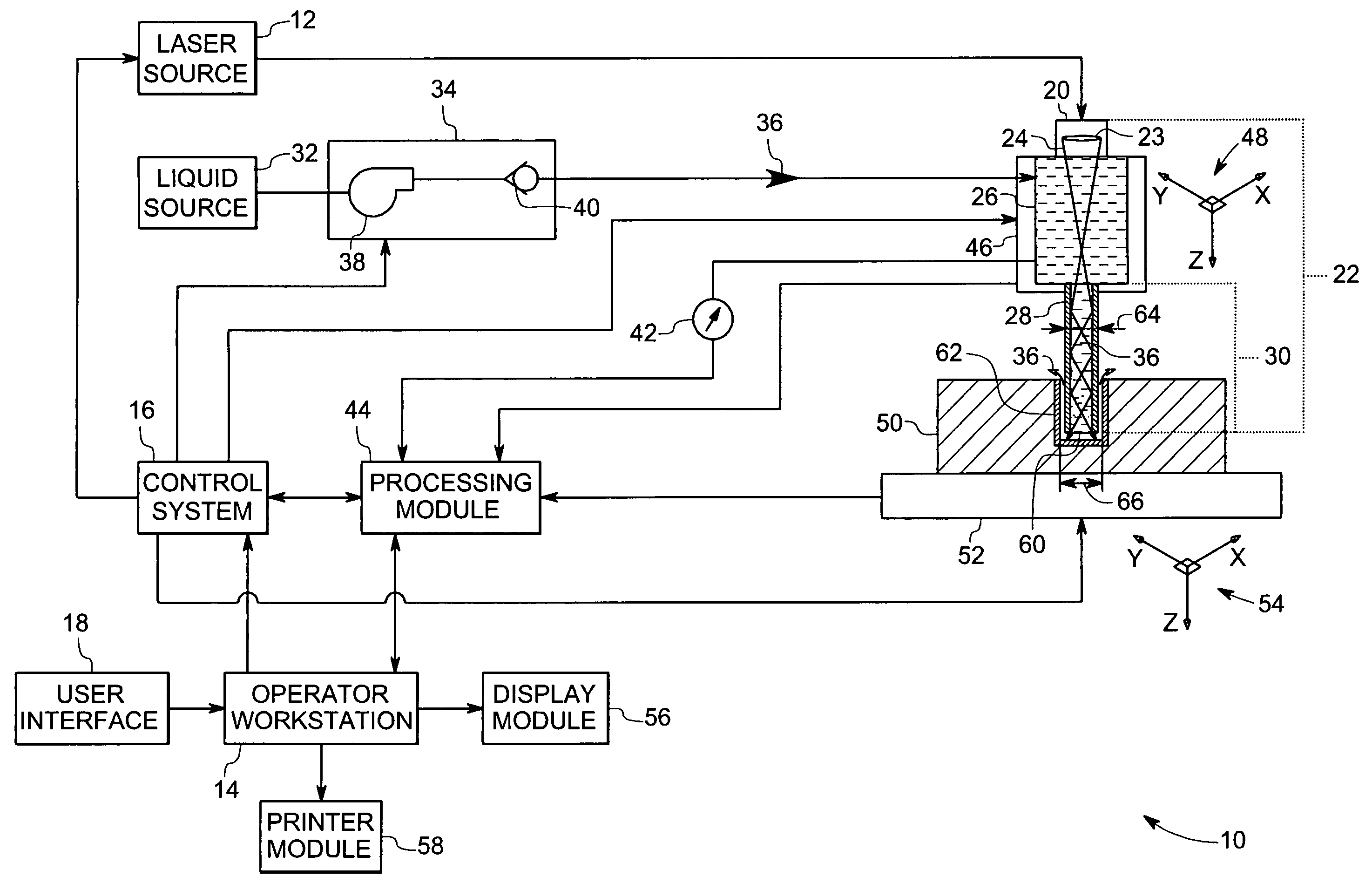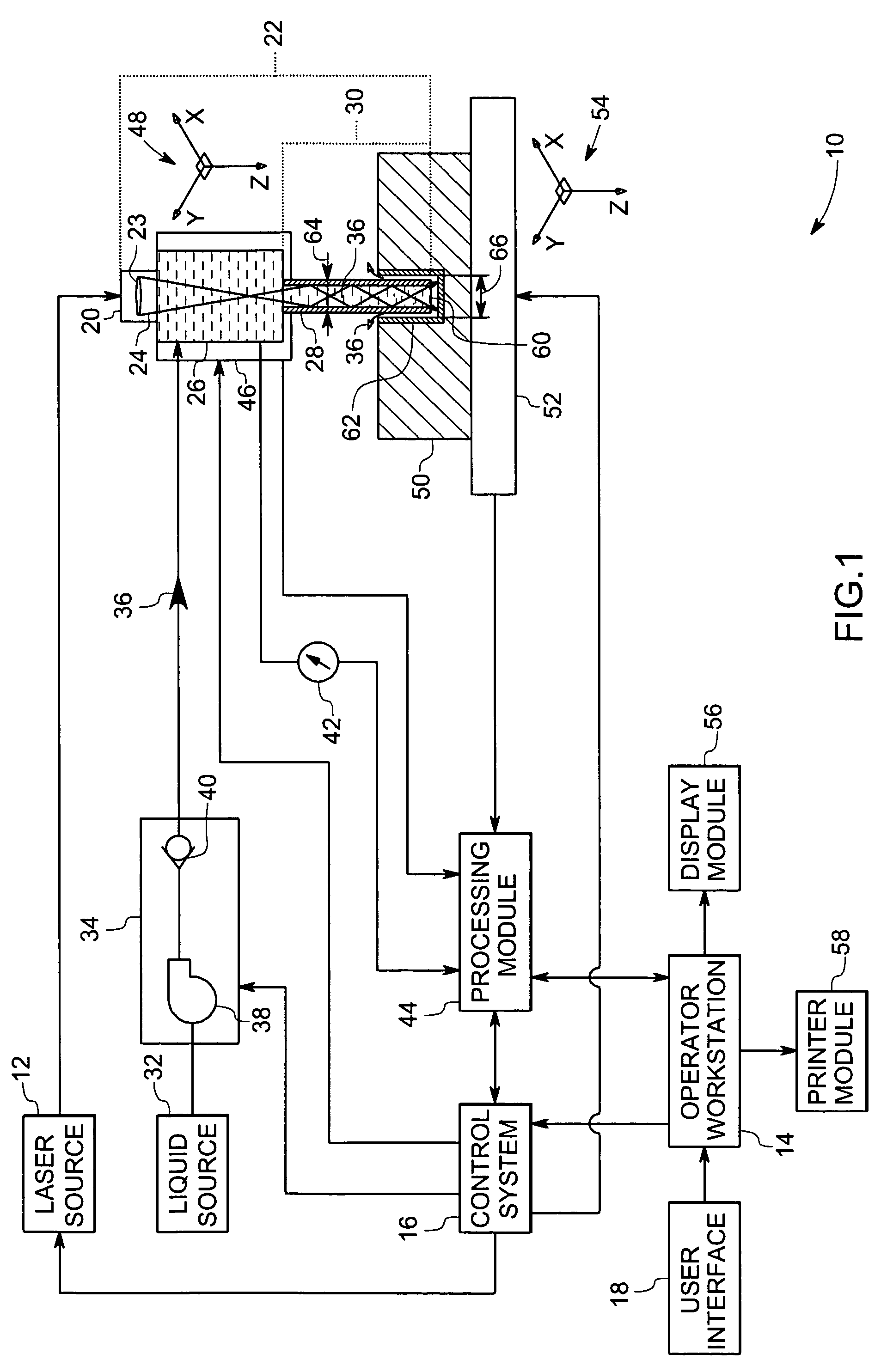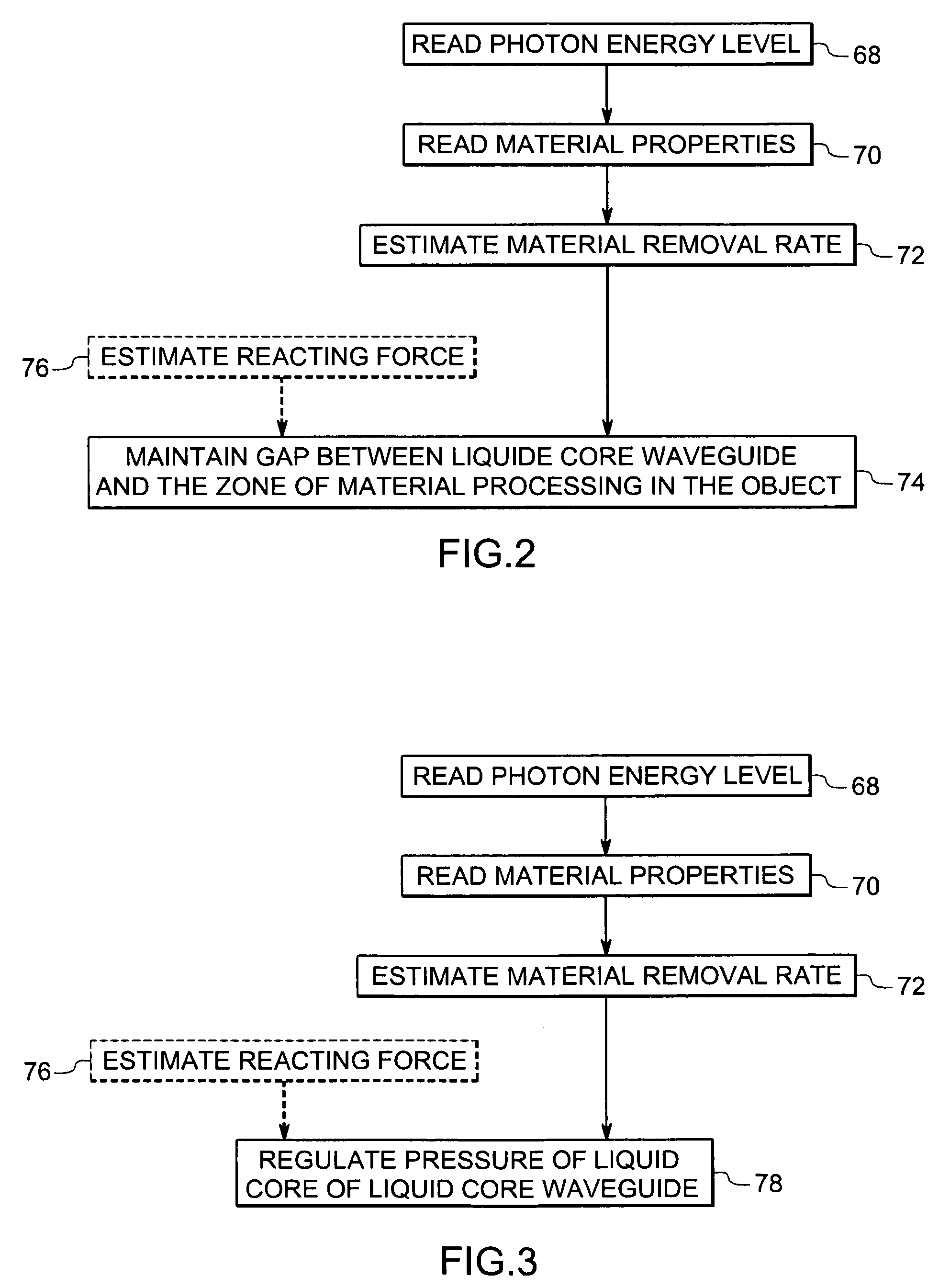Photon energy material processing using liquid core waveguide and a computer program for controlling the same
a liquid core waveguide and material processing technology, applied in the direction of cladded optical fibres, manufacturing tools, instruments, etc., can solve the problems of solid core fibers that have inherent difficulties in transmitting high peak energy intensities or high average powers, core fibers that distort so much, and eventually solid core fibers
- Summary
- Abstract
- Description
- Claims
- Application Information
AI Technical Summary
Benefits of technology
Problems solved by technology
Method used
Image
Examples
Embodiment Construction
[0016]As a preliminary matter, the definition of the term “or” for the purpose of the following discussion and the appended claims is intended to be an inclusive “or.” That is, the term “or” is not intended to differentiate between two mutually exclusive alternatives. Rather, the term “or” when employed as a conjunction between two elements is defined as including one element by itself, the other element itself, and combinations and permutations of the elements. For example, a discussion or recitation employing the terminology “A” or “B” includes: “A” by itself, “B” by itself and any combination thereof, such as “AB” and / or “BA.”
[0017]The present technique is generally directed towards material processing using photon energy. Different levels of photon energy intensity correspond to different material processing processes. For example, laser transformation hardening and laser aided manufacturing are performed at photon energy intensities of around 103 to 104 watts / square centimeter ...
PUM
| Property | Measurement | Unit |
|---|---|---|
| depth | aaaaa | aaaaa |
| wavelength | aaaaa | aaaaa |
| refractive index | aaaaa | aaaaa |
Abstract
Description
Claims
Application Information
 Login to View More
Login to View More - R&D
- Intellectual Property
- Life Sciences
- Materials
- Tech Scout
- Unparalleled Data Quality
- Higher Quality Content
- 60% Fewer Hallucinations
Browse by: Latest US Patents, China's latest patents, Technical Efficacy Thesaurus, Application Domain, Technology Topic, Popular Technical Reports.
© 2025 PatSnap. All rights reserved.Legal|Privacy policy|Modern Slavery Act Transparency Statement|Sitemap|About US| Contact US: help@patsnap.com



